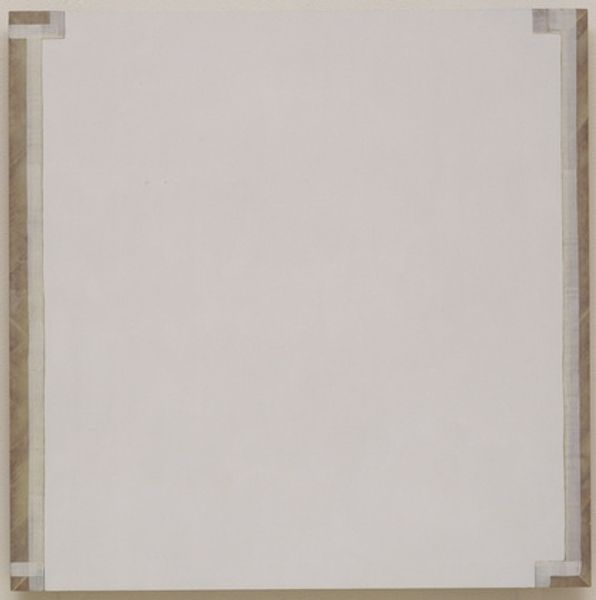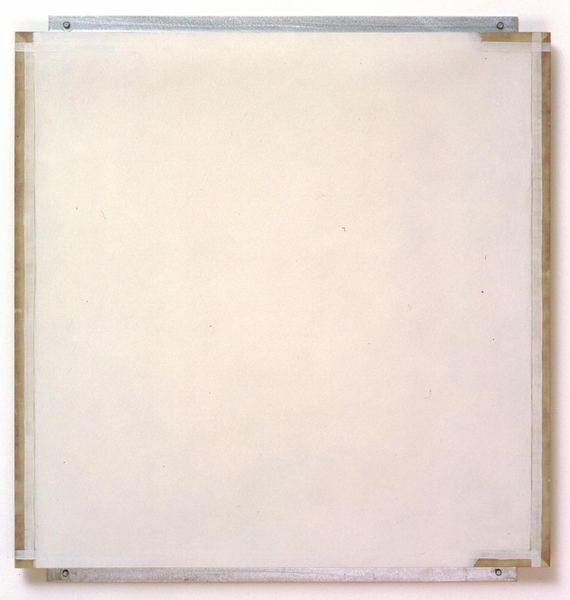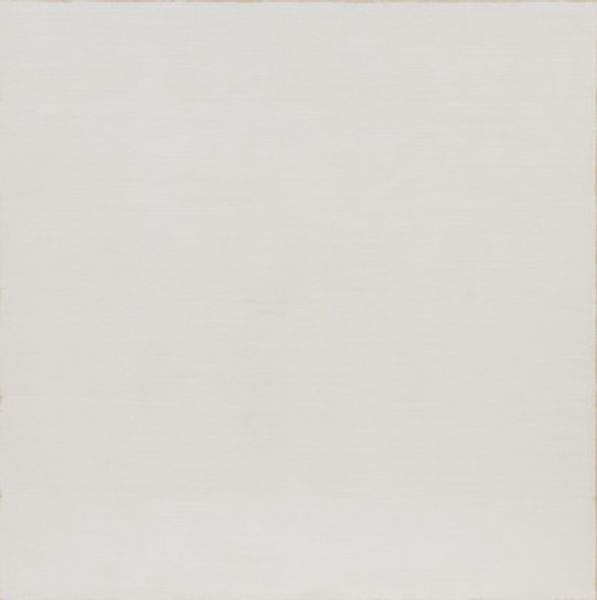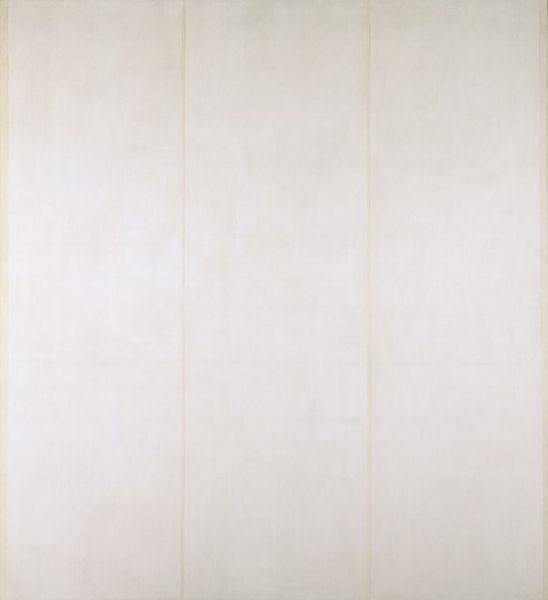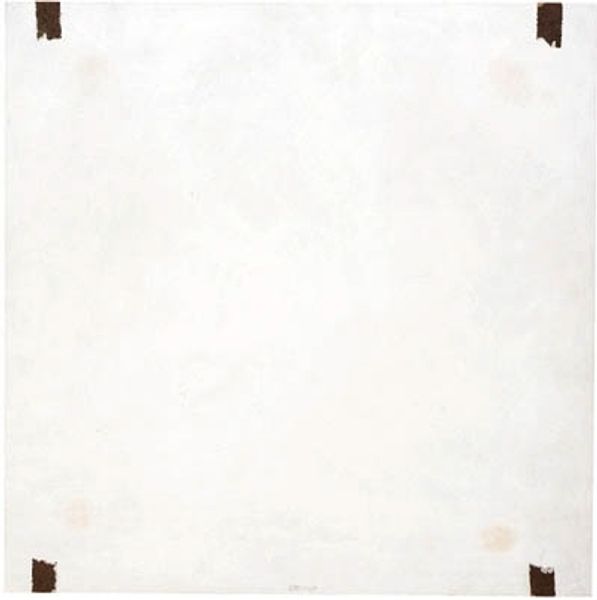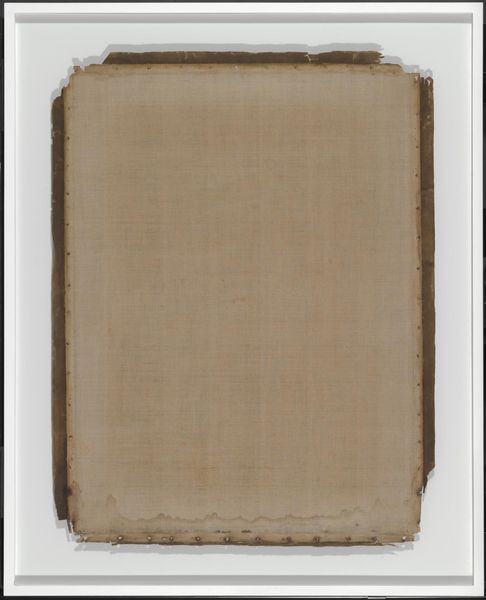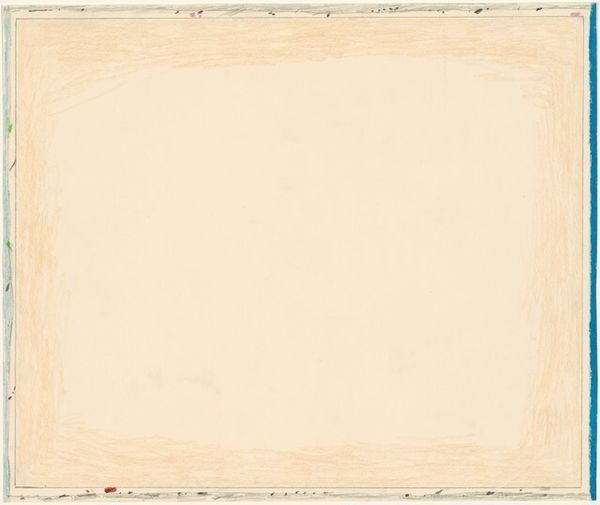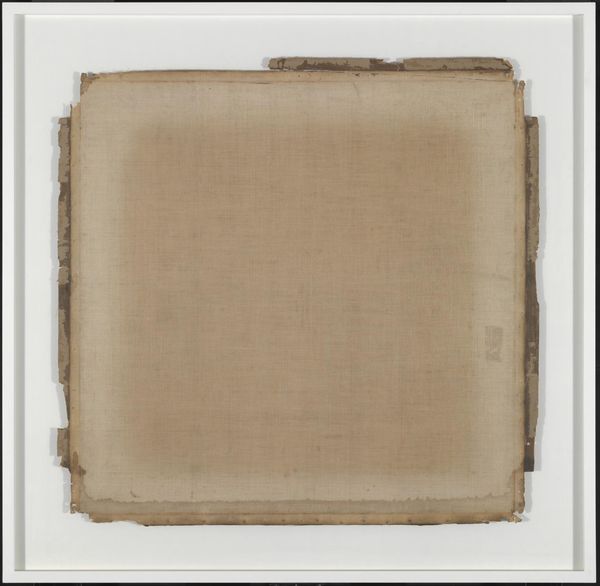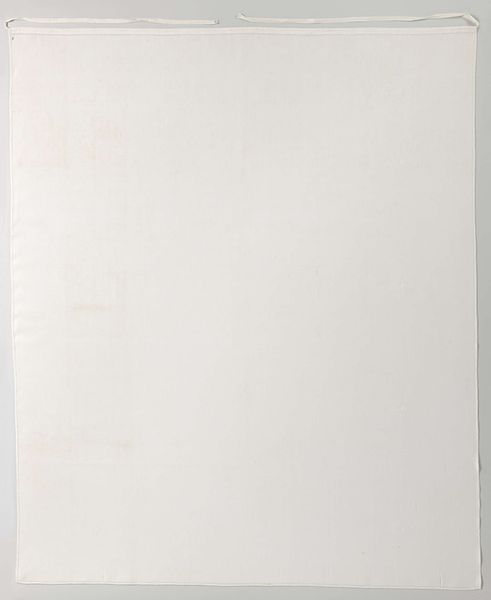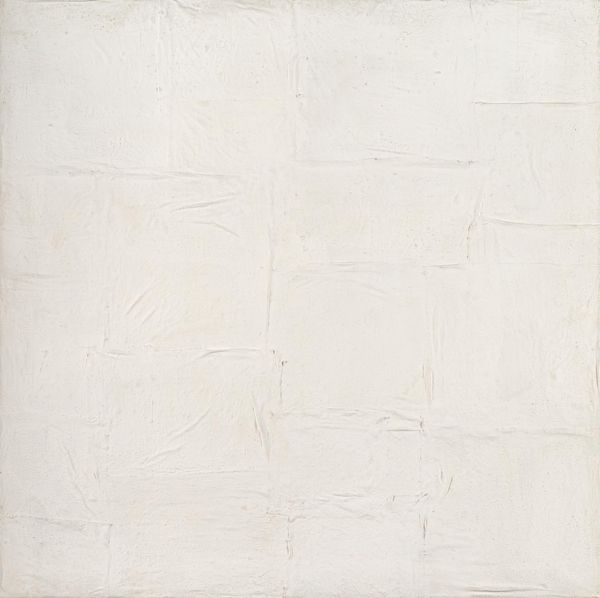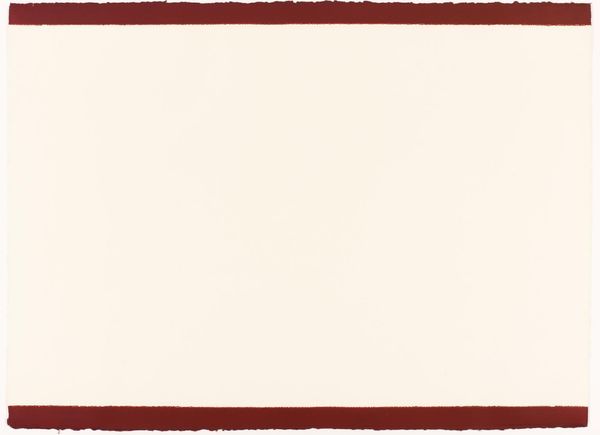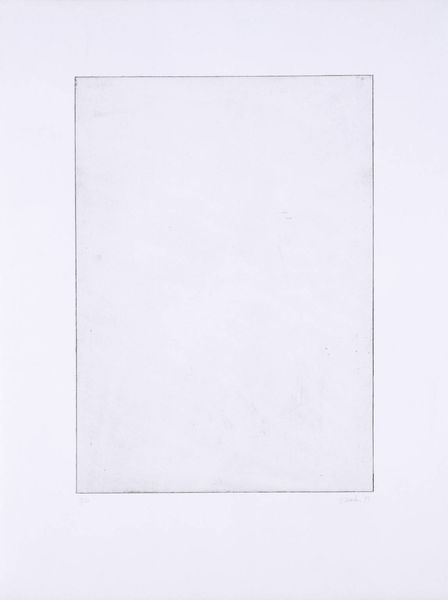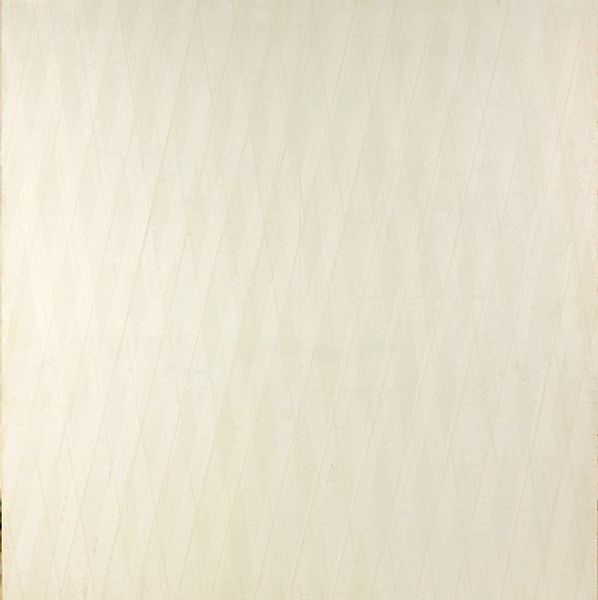
Dimensions: support: 763 x 711 x 36 mm
Copyright: © Robert Ryman | CC-BY-NC-ND 4.0 DEED, Photo: Tate
Editor: Here we have Robert Ryman's "Ledger" from the Tate. It looks like a mostly white canvas with some exposed hardware. Honestly, at first glance, it just seems… blank. What am I missing? Curator: Missing? Perhaps you are seeing it exactly as it is intended. Ryman challenges the traditional idea of painting as representational or expressive. Consider the context: Minimalism emerging in the 60s, questioning art's role in a society grappling with social upheaval. Editor: So, the blankness is the point? Curator: Precisely! It's about deconstructing the myth of the artist as a genius imbuing the canvas with profound meaning. What if the meaning resides in the viewer's interaction with the surface, the texture, the visible support? Editor: I see. It’s about shifting the power dynamic between the art and the viewer, revealing the structures of art itself. I now see something else. Curator: Indeed. And that's the revolution.
Comments
Join the conversation
Join millions of artists and users on Artera today and experience the ultimate creative platform.
tate 8 months ago
⋮
Ryman made this painting using pigmented shellac laid over plastic and glass. It is one of about nine paintings from the same period. The strips of aluminium, which are part of the work, allow it to be attached it to the wall. Ryman pays great attention to the paintbrush marks. He uses white because he considers it less ‘emotionally charged’ than other colours. His works are about surface, texture, grain and light rather than composition. Gallery label, August 2020
